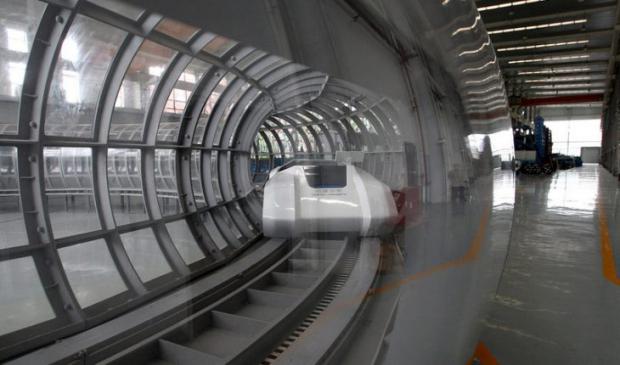
Breaking News
 2 Hours of Retro Sci-Fi Christmas Songs | Atomic-Age Christmas at a Snowy Ski Resort
2 Hours of Retro Sci-Fi Christmas Songs | Atomic-Age Christmas at a Snowy Ski Resort
 Alternative Ways to Buy Farmland
Alternative Ways to Buy Farmland
 LED lights are DEVASTATING our bodies, here's why | Redacted w Clayton Morris
LED lights are DEVASTATING our bodies, here's why | Redacted w Clayton Morris
Top Tech News
 Travel gadget promises to dry and iron your clothes – totally hands-free
Travel gadget promises to dry and iron your clothes – totally hands-free
 Perfect Aircrete, Kitchen Ingredients.
Perfect Aircrete, Kitchen Ingredients.
 Futuristic pixel-raising display lets you feel what's onscreen
Futuristic pixel-raising display lets you feel what's onscreen
 Cutting-Edge Facility Generates Pure Water and Hydrogen Fuel from Seawater for Mere Pennies
Cutting-Edge Facility Generates Pure Water and Hydrogen Fuel from Seawater for Mere Pennies
 This tiny dev board is packed with features for ambitious makers
This tiny dev board is packed with features for ambitious makers
 Scientists Discover Gel to Regrow Tooth Enamel
Scientists Discover Gel to Regrow Tooth Enamel
 Vitamin C and Dandelion Root Killing Cancer Cells -- as Former CDC Director Calls for COVID-19...
Vitamin C and Dandelion Root Killing Cancer Cells -- as Former CDC Director Calls for COVID-19...
 Galactic Brain: US firm plans space-based data centers, power grid to challenge China
Galactic Brain: US firm plans space-based data centers, power grid to challenge China
 A microbial cleanup for glyphosate just earned a patent. Here's why that matters
A microbial cleanup for glyphosate just earned a patent. Here's why that matters
 Japan Breaks Internet Speed Record with 5 Million Times Faster Data Transfer
Japan Breaks Internet Speed Record with 5 Million Times Faster Data Transfer
Test track has 33 times lower air pressure as progress towards 4000 kilometer per hour trains

A maglev (magnetic levitation) line would use partly or fully evacuated tubes or tunnels. Reduced air resistance could permit vactrains to travel at very high speeds with relatively little power—up to 6,400–8,000 km/h (4,000–5,000 mph). This is 5–6 times the speed of sound in Earth's atmosphere at sea level.
China has slashed air pressure in a test track tube to as low as 2.9 centibars, or 2.9 kilopascal units of pressure, in experiments on the 6-meter-diameter test run at a maximum speed of 50 kilometers per hour. Standard atmosphere pressure is 101.325 kilopascals. The pressure is 33 times lower than normal air pressure.
Standard sea-level pressure, by definition, equals 760 mm (29.92 inches) of mercury, 14.70 pounds per square inch, 1013.25 dynes per square centimeter, 1,013.25 millibars, one standard atmosphere, or 101.325 kilopascals.
A proof-of-principle prototype for a 45-meter track has been developed by Deng Zigang and his team from the applied superconductivity laboratory at Southwest Jiaotong University in Chengdu.
ET3 has developed fairly detailed designs for low-pressure trains
ET3 is literally "Space Travel on Earth". ET3 is silent, low cost, safe, faster than jets, and is electric.
Car sized passenger capsules travel in 1.5m (5′) diameter tubes on frictionless maglev. Air is permanently removed from the two-way tubes that are built along a travel route. Airlocks at stations allow transfer of capsules without admitting air. Linear electric motors accelerate the capsules, which then coast through the vacuum for the remainder of the trip using no additional power. Most of the energy is regenerated as the capsules slow down. ET3 can provide 50 times more transportation per kWh than electric cars or trains.
Speed in initial ET3 systems is 600km/h (370 mph) for in state trips, and will be developed to 6,500 km/h (4,000 mph) for international travel that will allow passenger or cargo travel from New York to Beijing in 2 hours. ET3 is networked like freeways, except the capsules are automatically routed from origin to destination.
ET3 capsules weigh only 183 kg (400 lbs), yet like an automobile, can carry up to six people or 367 kg (800 lbs) of cargo. Compared to high speed rail, ET3 needs only 1/20th the material to build because the vehicles are so light. With automated passive switching, a pair of ET3 tubes can exceed the capacity of a 32 lane freeway. ET3 can be built for 1/10th the cost of High Speed Rail, or 1/4th the cost of a freeway.

 $100 SILVER CONFIRMED?
$100 SILVER CONFIRMED?

